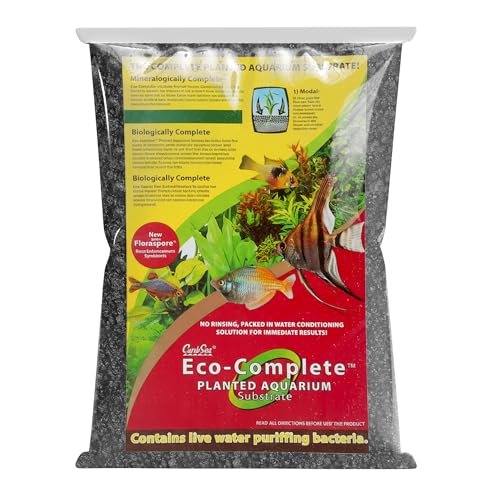Live aquatic plants can enhance the appearance of your aquarium. However, aquatic plant cultivation and maintenance can be a hassle. Good-quality plants can help support a healthy underwater ecosystem in the tank.
From maintaining CO2 levels to providing quiet hiding spots, aquarium plants do more than you’d anticipate.
Each aquatic plant’s needs are diverse, and the substrate is essential to keeping healthy plants in your tank. Let’s look at aquatic plant soil needs.
Table of Contents
Do You Need Soil for Aquarium Plants? Is It Beneficial?
To be clear, not every aquarium plant needs soil for growth. The primary factor that determines the plant’s needs is its root system.
The plant won’t need soil as a buffer if the roots can absorb nutrients from the substrate (from natural decaying material). However, if the roots aren’t sufficient, the plant might need soil and fertilizer to support its growth underwater.
The root feeders are the ones that need a balance of substrate and soil to propagate. Since you can’t always successfully anchor the plants directly to the substrate, you’d need soil to keep them in place.
Some of the common types of root feeders are:
Bulbs — These are bulbous plants that rely solely on underwater soil for growth. They divide and grow into new bulbs.
Ground cover plants — Plants like Vallisneria are typical examples of this type. They cover the bottom of the tank and propagate very quickly.
Node propagators — The last variant on the list are the node propagators, which grow from the branches. When pieces of a branch break off, these begin to root, forming new plants.
The main reason soil substrate is essential to underwater plants is its nutritional value. The aquatic plants quickly absorb the dissolved food to support growth and health.
Are There Any Disadvantages of Soil-Based Substrate?
Along with the benefits of soil-based substrates come a few complications. However, with proper measures, any difficulties are easily managed.
Some of the potent disadvantages include:
1. Substrate Change the Water Chemistry
Active substrates often contain a range of nutrients. So, don’t be surprised if adding a substrate can drastically change the water’s chemistry.
A sudden change in the water’s chemistry, especially with the pH and nutrient levels, can negatively affect the fish and plants. So, remember this, regardless of the type of soil substrate you are adding. It’s wise to do a water analysis whenever you add a new item, such as substrate, to the tank.
2. Cloudy and Muddy Appearance of Tank Water
It goes without saying that adding soil as a substrate will cause water to become murky. This is because soil usually contains soluble elements that will either dissolve or form a suspension in the tank water, creating discoloration and cloudy water. Regular water changes are needed to improve water appearance, and a sound filtration system can help manage some of the deposited particles.
3. Nutrients Need to Be Replenished
Although not necessarily a disadvantage, it is a common issue with soil substrates that the nutrients are soon depleted. Usually, soil substrates only have nutrients that last for a year or two. Once nutrient density drops, you must add fertilizers or change the entire substrate for fresh soil with more nutrients.
4. Soil Substrates Are Expensive
The last issue is with the cost. Soil substrates are expensive, mainly because they are sourced from special areas of the planet where the soil is known to have a dense nutrient profile. So, a soil substrate costs much more than sand or gravel substrates.
How To Plant Aquarium Plants in Soil?
Planting your aquatic plants into the soil substrate is an easy process. We recommend doing this when initially setting up the aquarium instead of later.
Start by separating the plant’s roots. Hold them with a tweezer to avoid contaminating the fragile roots with substances from your hands. Begin planting the different sections into the soil substrate. Secure the roots, and don’t squeeze them too hard when anchoring in the substrate, as this can damage the roots or lead to suffocation. Leave some room for aeration and propagation too.
Also, you don’t have to bury half of the plant to hold it in place. Secure the roots inside the soil, and you are good to go.
Best Soil Substrate for Aquarium Plants
Soil substrate for aquarium plants is easily available. There are many brands for your aquarium; you don’t have to buy only the “best brand.”
After much research, we have sorted out the top 5 soil substrates you can consider buying.
1. Aqueon Plant and Shrimp Aquarium Substrate
At just under $20, this soil substrate is a slightly more expensive option as the bag is only 5 pounds in weight. However, Aqueon substrate is highly nutritious and will boost your freshwater plants, fish, and other aquatic animals.
Since the soil is a clay-based product, and it’s shaped in small balls, you can be assured it maintains shape over time. With better form and shape retention, this is a substrate that lends itself to aquascaping and planting of aquatic plants.
As a bonus, this substrate doesn’t cause the tank water to become murky as it doesn’t dissolve and form particles as easily.
– – –
2. SeaChem Flourite
The SeaChem products are quality substrates that have many happy aquarists investing in these to help their plants grow. The product is clay-based, and it is composed of large gravel-like flakes. However, the nutrient quality is said to never need replacing, which is definitely a bonus.
After the initial rinse (which can take several rinse sessions), all dust is removed from the substrate soil, which then becomes adequately saturated to add to the tank.
Once you’ve created your aquascape, it’s vital to run a good filtration cycle for several hours until the murky appearance disappears before adding your fish or plants.
– – –
3. CaribSea Eco-Complete 20-Pound Planted Aquarium
Priced under $30, the soil substrate from CaribSea is a popular choice. The 20-pound pack is ideal for beginners, especially those without any experience with live plants.
The soil comprises volcanic soil substrate and is enriched with all the micro and macronutrients. Volcanic soil blends calcium, potassium, magnesium, phosphorus, etc.
The high nutritional value and chemical structure of this substrate maintains integrity and reduces the risk of disintegration. So, you get high-quality substrate from a reliable brand at an affordable price.
– – –
4. Aqua Natural Galaxy Sand Bio-Substrate 5lb for Aquariums
While fish tanks have loads of fertilizer in the form of fish waste, much of this is not suitable for plants as it needs to be nitrified by bacteria. This is where the bio-substrate from Aqua Natural Galaxy is ideal.
The black volcanic sand has been enriched with special bacteria to help kickstart the cycle to produce usable nutrients from fish wastes. In an established fish tank, this is a great additive, and it can also be used to help plants root.
At less than $15 per 5 pound bag, it’s a great priced item too. While the sand has been washed, it’s worth washing it again, draining, washing, and repeating a few times to reduce cloudiness when you add it to your tank.
– – –
5. Activ Betta Aquarium Sand
This black sand contains live bio-flora bacteria that instantly begins to produce nutrients for your plants once you add it to the tank.
As with most aqua sand products, it’s essential to rinse it thoroughly before adding to reduce cloudiness, though you don’t want to get rid of the live culture mixed into the sand either. Alternatively, you could add it to your tank as is (preferably after removing the fish), then run a filter cycle until the cloudiness has dissipated.
At less than $20 per pound, this is not the cheapest aqua sand on the market, but it works well in planted tanks with a lively fish population.
– – –
How Much Aquarium Soil Do You Need?
The optimal level of aquarium soil depends on multiple factors. For example, it depends on the size of the aquarium, the depth of the roots of the aquatic plants, and the depth of the soil you want at the bottom.
As a rule of thumb, for a two inch substrate bed, you require one pound of substrate per gallon of tank volume.
There’s a straightforward formula to calculate the aquarium soil you’d need. It suggests:
Amount of aquarium soil = length x width x depth / 1000 of the tank
Adding soil substrates to the tank is superior to gravel or sand because of the steady nutrient supply. You won’t have to worry about adding extra nutrients or fertilizers when you use good-quality soil.
Also, position the soil at a gentle gradient. Slanted soil allows quicker and better absorption of nutrients into the roots.
If you have a freshwater tank, the depth of the substrate is generally between 2-5 inches. That is standard and allows for the more efficient anchorage of the roots into the soil.
Also, when adding soil to the aquarium, only add aquarium soil. Don’t make the mistake of adding random soil to your garden.
Can Aquarium Plants Grow Without Soil?
Most aquarium plants can grow without soil. However, remember that plants need a nutrient supply for growth.
So, if they aren’t getting it from the soil, you’d have to add it externally with fertilizers. Needing to supplement nutrients via fertilizers is the biggest issue.
Instead of soil substrate, gravel, and sand make the next best choice. However, not all aquatic plants grow well in aquariums without soil; those that thrive are rhizome plants, root feeders, and stem plants.
You’d have to carefully plan the placement of plants when anchoring them in the substrate. Don’t bury the roots into the substrate because that will damage the plants.
Aquarium Plants That Do Not Need Soil
While we are on the topic, let us talk about some of the best aquarium plants that aren’t dependent on soil growth.
1. Java Fern
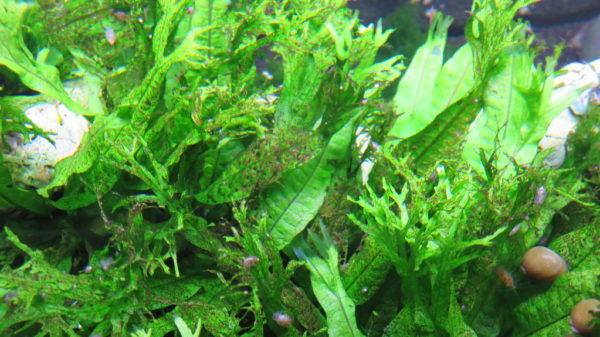
Ferns are hands down one of the most versatile aquatic plants. They grow amazingly well in gravel or sand substrates. But, unfortunately, you have to tie them securely to driftwood and let nature take its course.
Since ferns propagate rapidly, you might have to nip and trim the excess if they crowd out the aquarium.
2. Java Moss
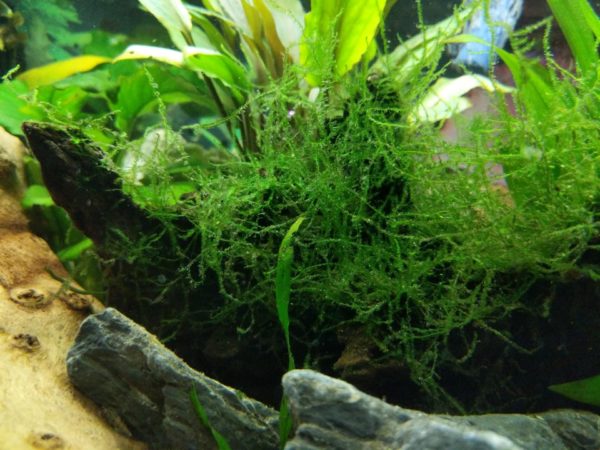
Java mosses are hard to tame, especially when they have all the correct water parameters. Unlike other aqua plants, moss grows like a weed. You might have to control their growth before they turn for the worse.
Mosses help aerate the water but also serve as good hiding spots for the fish and shrimp in the tank.
3. Amazon Frogbit
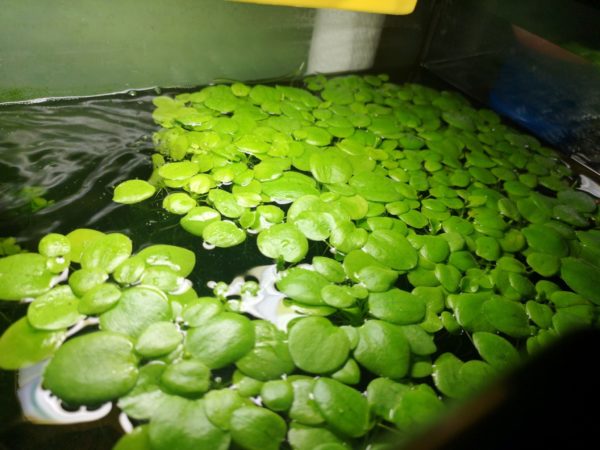
As weird as the plant’s name is, Amazon frogbit is unique. It is a floating plant that crowds the surface of the tank. These plants are good hiding spots for small fish species in community tanks. So, adding one or two species can elevate the décor of your fish tank.
4. Hornwort
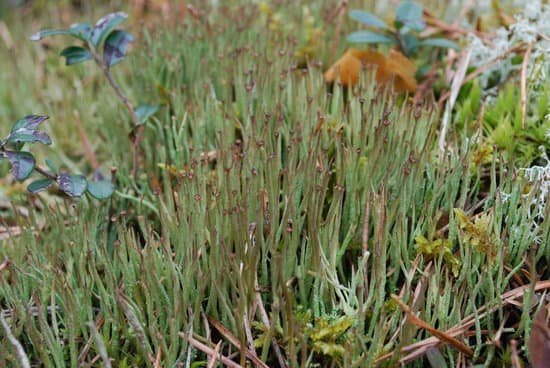
One of the most common aquatic plants, hornwort, has a unique needle-like appearance. Hornwort can live as floating plants or grow submerged in the gravel substrate.
However, these plants propagate quickly and need stable CO2 levels, which you’d have to supplement with a CO2 aerator.
5. Elodea
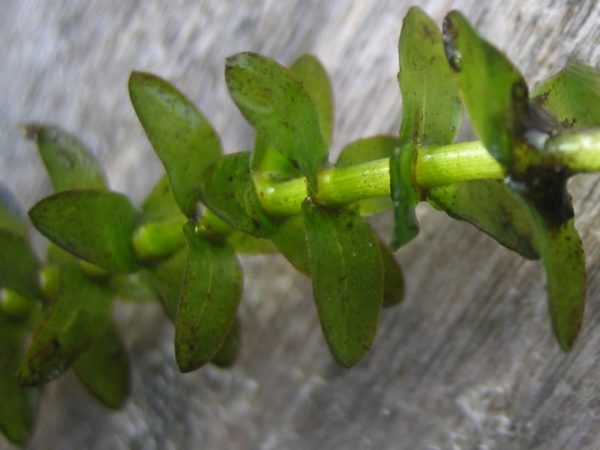
Elodea is the last plant on the list, and it’s a node propagator that grows from the stem. These are fast growers that absorb loads of nutrients from the tank. So, check the nutrient levels if you add them to your aquarium.
Wrapping Up
Growing aquatic plants in soil-substrate can become a rather involved process. However, not every aquarist follows through, and often the plants die off due to poor management.
If you have any questions about the importance and need of soil for aquarium plants, we hope this answers your queries. Read up about the type of plant you are adding to your aquarium, as each plant has its own needs.
Happy aqua-gardening!



